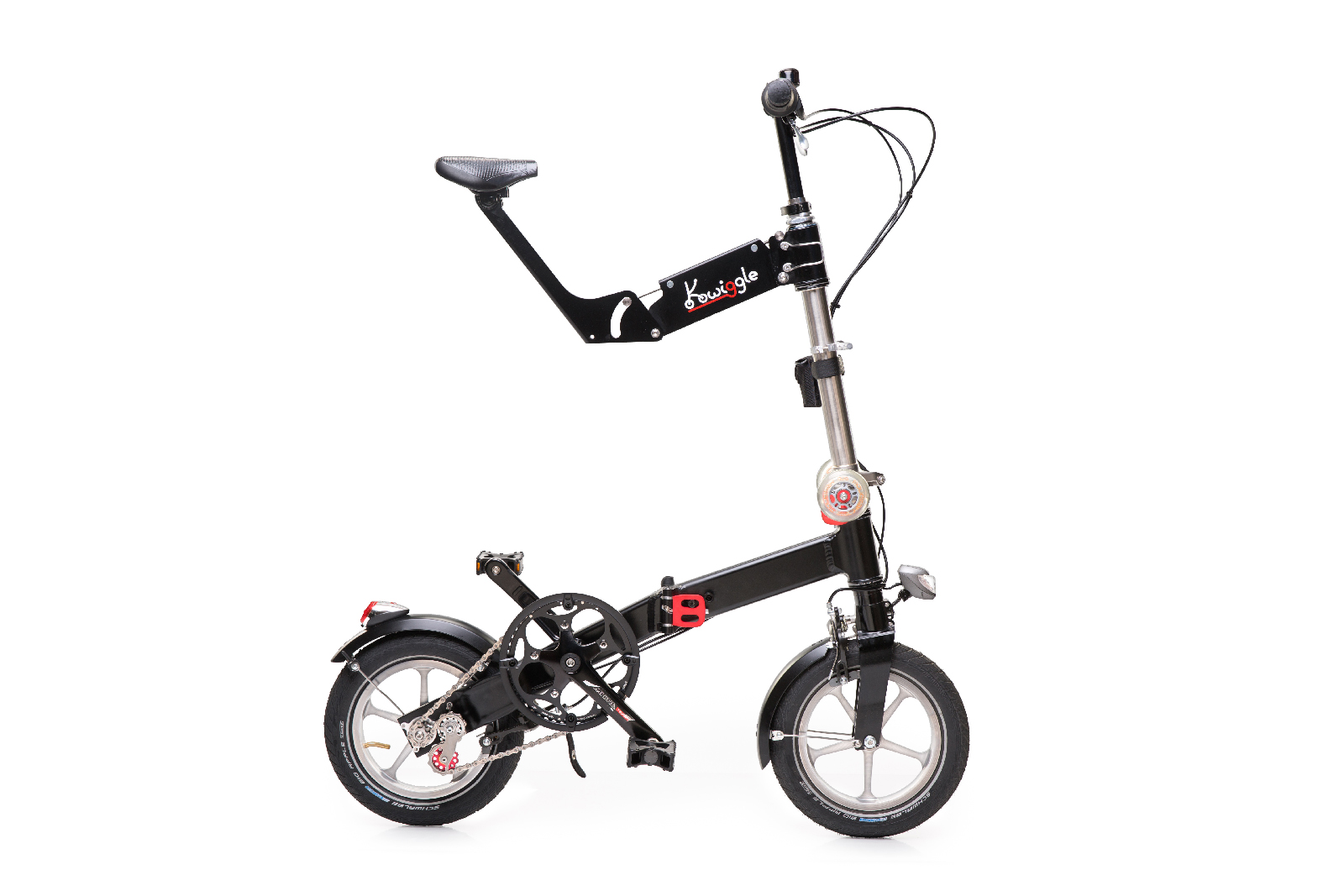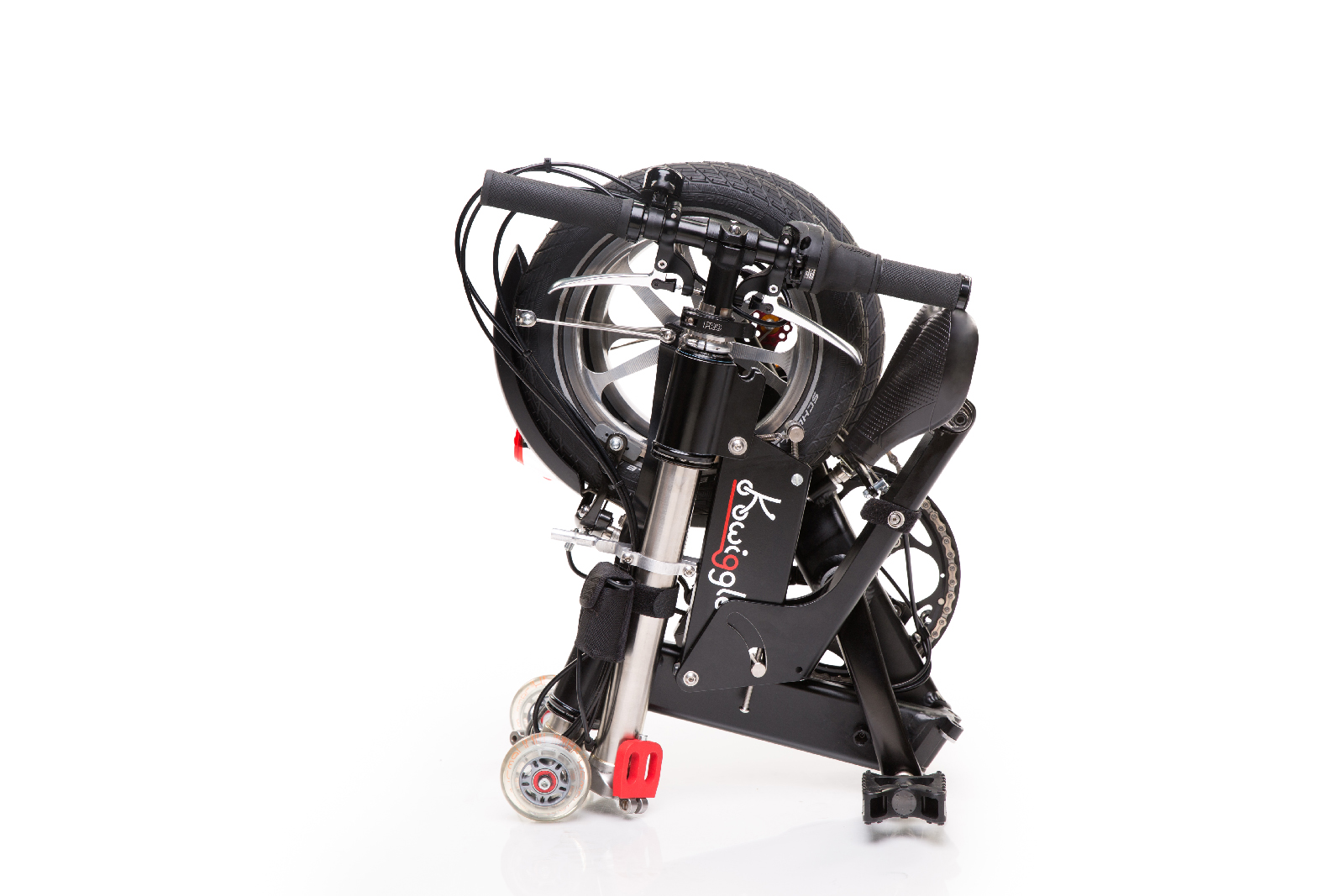Regrettably awesome, very cool! It is a ‘must have’ item...
... that's how 'Cycling Claude', a blogger for bike enthusiasts, describes his first riding experiences on the world's most compact folding bike - the Kwiggle®. He is not alone in this assessment. 'Der Spiegel' writes: "in ten seconds, with a little practice, the bike transforms into a handy package."
"Works perfectly!" praises manager-magazin.de: 'Die Welt' says "Cleverly folded." And 'Wirtschaftswoche' headlines: "The world's smallest wire bike comes from Hanover." Karsten Bettin has developed the world's most compact folding bike there. Now it is being produced: Made in Germany and Feinguß Lobenstein is involved.
Properties
One of the key components is the steel folding hinge on the head tube, manufactured by Feinguß Lobenstein using the precision casting process. Its precision, durability and compactness meet the specifications for this compact world record.
The result is that mobility has been completely redesigned – between public transport and the office, between the train station and meetings, between the car park and the trade fair. And the Kwiggle turns the street into a catwalk – if you’re riding a Kwiggle, you’re bound to turn heads!
Its inventor, Karsten Bettin, considers his Kwiggle to be a unique combination of cycling efficiency, compactness and lightweight design. ‘We easily cycle 200 km a day on it with average speeds that no-one would expect. This is not down to our fitness, but due to the upright, highly anatomical cycling technique. For this unique combination of maximum compactness and a high level of endurance and rider comfort, the folding hinge on the steel handlebars above the head tube takes on a key role in our design, which has to withstand the highest load requirements.’
As a consequence, the most appropriate steel for the folding hinge was sought out in collaboration with material and casting specialists from Feinguß Lobenstein. ‘Feinguß Lobenstein’s suggestions regarding the quality of materials available, their composition, castability, corrosion behaviour and visual appearance were particularly helpful in this respect,’ says Bettin. ‘Of equal importance was the in-depth interaction relating to the optimal, casting-compatible component design andFeinguß Lobenstein’s flexibility as regards pushing the limits of the casting process.’

